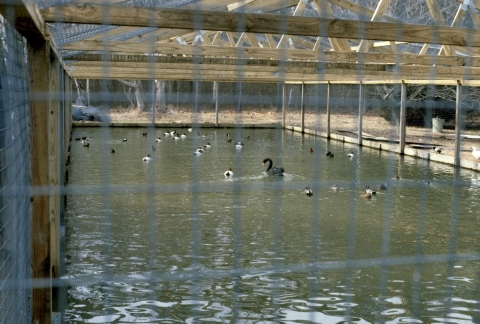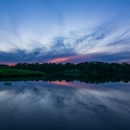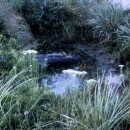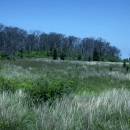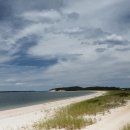About Us
The refuge, located in Islip on the south shore of Long Island, consists of 209 acres bordering the Great South Bay, and is separated from the Atlantic Ocean by Fire Island. With its diverse mix of upland and wetland habitat types, Seatuck hosts more than 200 bird species, and serves as an oasis in a heavily developed urban area.
Upland Habitat
Upland habitats form about half the area of the Seatuck National Wildlife Refuge, including old fields, brush, and woodland habitats. The upland habitats are equally divided between mixed-oak woodland, red maple stands, upland shrub, and grasslands, and includes pine barren habitat. Seatuck Refuge holds the potential to be a transplant site for the federally endangered plant, sandplain gerardia, because of its soil type and associated grassland plants.
Saltmarsh
The remaining half of Seatuck Refuge is saltmarsh, consisting largely of salt hay with scattered stands of Phragmites, an exotic and invasive plant. Freshwater wetlands and ponds provide a significant water source for wildlife. The bulk of the aquatic habitats include saltmarsh and subtidal types. The U.S. Fish and Wildlife Service Northeast Estuary Office has classified the Seatuck Refuge as part of the larger Great South Bay and declared the Refuge a significant coastal habitat.
Our Mission
Vision
Long Island National Wildlife Refuge Complex will preserve, manage, and restore some of the last significant natural areas for wildlife habitat, ranging from coastal systems, to native grasslands to mature forests. These habitats, present in nine distinct units, will support threatened and endangered species in addition to hundreds of species of migratory birds and other wildlife within the Atlantic Flyway.
Located adjacent to the nation’s major media center, the Complex is an ideal setting to increase public awareness, understanding and support of the National Wildlife Refuge System. We recognize that success is dependent on the Complex becoming an integral part of the community. We will work together with partners and local communities to protect priority wildlife-dependent recreational and educational opportunities. Through the use of the best scientific information and active habitat management, we will contribute to the fulfilling of the mission of the National Wildlife Refuge System for future generations.
Refuge Purpose
Each unit of the National Wildlife Refuge System is established to serve a statutory purpose that targets the conservation of native species dependent on its lands and waters. All activities on those acres are reviewed for compatibility with this statutory purpose.
The purpose of Seatuck is as follows:
- “…for use as an inviolate sanctuary, or for any other management purpose, for migratory birds” (16 U.S.C. §715d).
Our History
The Peters family originally owned the Seatuck refuge since the late 1800s. Having no heirs, Natalie Peters Webster decided to donate her 200 acre property to the government in 1968, following in her cousin Hathaway Scully's footsteps who also donated her property to the Audubon Society to be used as a wildlife sanctuary and nature center.
The Seatuck Research Program (SRP) was a collaboration between the U.S. Fish and Wildlife Service, Cornell University Laboratory of Ornithology and the Webster-Peters Trust Fund. SRP participants conducted a variety of research on the refuge, ranging from deer population studies to water management techniques. In this photo, Charles Webster (who donated the property that became Seatuck refuge) sits with the 1985 group of SRP members.
Seatuck National Wildlife Refuge maintained waterfowl pens and a captive flock of native birds through the 1980s. Decoy carvers, artists and members of the South Shore Waterfowlers Association used the collection as an aid in duck identification.
Other Facilities in this Complex
The Long Island National Wildlife Refuge Complex consists of seven national wildlife refuges, two refuge sub-units and one wildlife management area wildlife management area
For practical purposes, a wildlife management area is synonymous with a national wildlife refuge or a game preserve. There are nine wildlife management areas and one game preserve in the National Wildlife Refuge System.
Learn more about wildlife management area . Collectively, the ten units are approximately 6,500 acres in size. Each unit is unique and provides a wildlife oasis amongst Long Island’s urban settings essential for the livelihood of migratory birds, threatened and endangered species, fish and other wildlife. The strategic location of Long Island in the Long Island Pine Barrens & along the Atlantic Flyway make it an important nesting, wintering and migratory stop over area for hundreds of species of birds.



